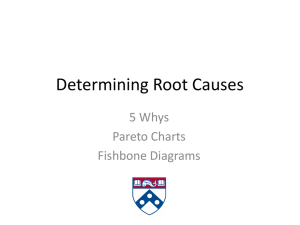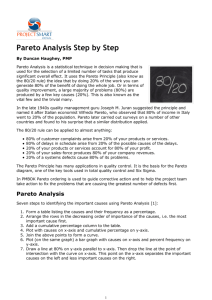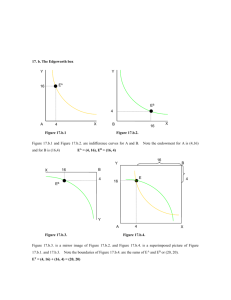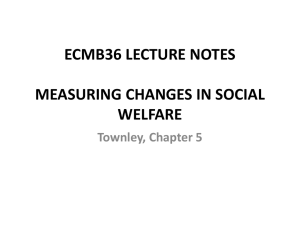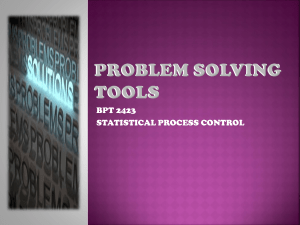Topic 3. The Pareto Principle and Pareto optimality
advertisement
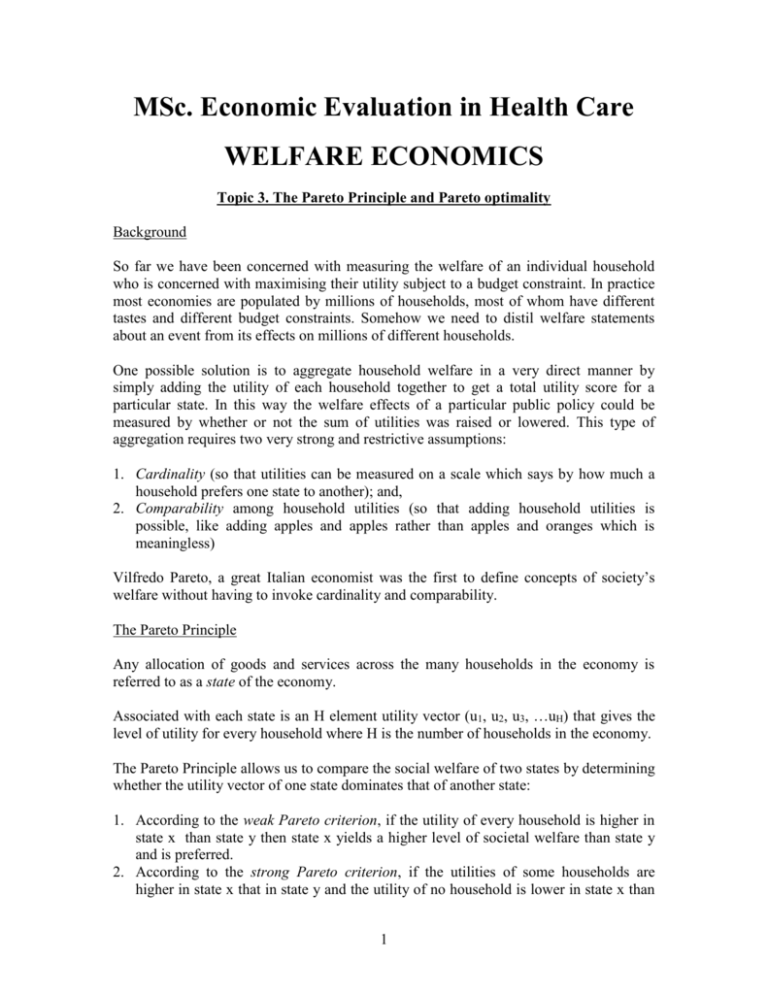
MSc. Economic Evaluation in Health Care WELFARE ECONOMICS Topic 3. The Pareto Principle and Pareto optimality Background So far we have been concerned with measuring the welfare of an individual household who is concerned with maximising their utility subject to a budget constraint. In practice most economies are populated by millions of households, most of whom have different tastes and different budget constraints. Somehow we need to distil welfare statements about an event from its effects on millions of different households. One possible solution is to aggregate household welfare in a very direct manner by simply adding the utility of each household together to get a total utility score for a particular state. In this way the welfare effects of a particular public policy could be measured by whether or not the sum of utilities was raised or lowered. This type of aggregation requires two very strong and restrictive assumptions: 1. Cardinality (so that utilities can be measured on a scale which says by how much a household prefers one state to another); and, 2. Comparability among household utilities (so that adding household utilities is possible, like adding apples and apples rather than apples and oranges which is meaningless) Vilfredo Pareto, a great Italian economist was the first to define concepts of society’s welfare without having to invoke cardinality and comparability. The Pareto Principle Any allocation of goods and services across the many households in the economy is referred to as a state of the economy. Associated with each state is an H element utility vector (u1, u2, u3, …uH) that gives the level of utility for every household where H is the number of households in the economy. The Pareto Principle allows us to compare the social welfare of two states by determining whether the utility vector of one state dominates that of another state: 1. According to the weak Pareto criterion, if the utility of every household is higher in state x than state y then state x yields a higher level of societal welfare than state y and is preferred. 2. According to the strong Pareto criterion, if the utilities of some households are higher in state x that in state y and the utility of no household is lower in state x than 1 state y then state x yields a higher level of societal welfare than state y and is preferred. Note that these Pareto criteria require only very weak assumptions about the nature of household utilities: 1. only ordinality of utility is needed (not cardinality); and, 2. we do not need to make comparisons about of the utilities of different households, so that units and levels of utilities need not be comparable across households. Pareto optimality If state x allows a welfare improvement over state y according to the Pareto criterion, then state x is said to be Pareto superior to state y, and state y is said to be Pareto inferior to state x. If all households enjoy the same level of utility in state x and state y then states x and y are Pareto indifferent. If state x is neither Pareto superior, nor Pareto inferior, not Pareto indifferent to state y then states x and y are Pareto non-comparable. Pareto non-comparable states are ones in which some households are made better off but others are made worse off in moving from one state to another. A feasible state is one that can be achieved given the economy’s resource constraints. Any feasible state for which no feasible Pareto superior state exists (i.e. there is no scope for Pareto improvement) is said to be Pareto optimal. If a state is Pareto optimal then there is no change that can be made in the economy, given current resource constraints, that can make any household better off without making another household worse off. There are many Pareto optimal states for a set of feasible states and all Pareto optimal states are Pareto non-comparable. Problems with the Pareto Principle 1. The Pareto ranking of states is incomplete (there exists Pareto non-comparability); 2. The Pareto Principle is neutral to the distribution of utility – a state of extreme utility disparity can be superior to one of utility equality providing somebody is better off and nobody is worse off in utility terms; and, 3. The Pareto Principle can conflict with liberalism. 2




